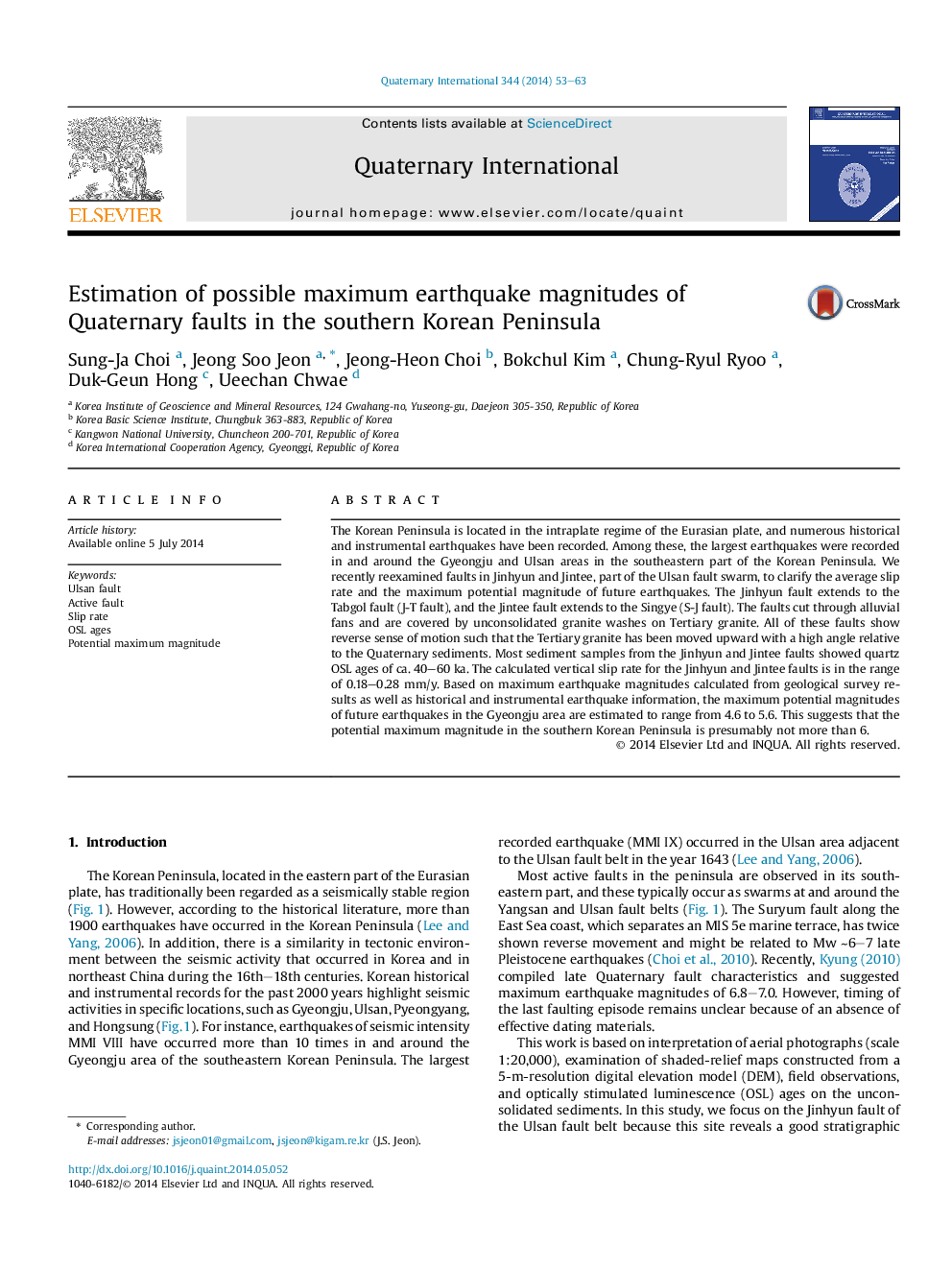| کد مقاله | کد نشریه | سال انتشار | مقاله انگلیسی | نسخه تمام متن |
|---|---|---|---|---|
| 1041204 | 1484152 | 2014 | 11 صفحه PDF | دانلود رایگان |
The Korean Peninsula is located in the intraplate regime of the Eurasian plate, and numerous historical and instrumental earthquakes have been recorded. Among these, the largest earthquakes were recorded in and around the Gyeongju and Ulsan areas in the southeastern part of the Korean Peninsula. We recently reexamined faults in Jinhyun and Jintee, part of the Ulsan fault swarm, to clarify the average slip rate and the maximum potential magnitude of future earthquakes. The Jinhyun fault extends to the Tabgol fault (J-T fault), and the Jintee fault extends to the Singye (S-J fault). The faults cut through alluvial fans and are covered by unconsolidated granite washes on Tertiary granite. All of these faults show reverse sense of motion such that the Tertiary granite has been moved upward with a high angle relative to the Quaternary sediments. Most sediment samples from the Jinhyun and Jintee faults showed quartz OSL ages of ca. 40–60 ka. The calculated vertical slip rate for the Jinhyun and Jintee faults is in the range of 0.18–0.28 mm/y. Based on maximum earthquake magnitudes calculated from geological survey results as well as historical and instrumental earthquake information, the maximum potential magnitudes of future earthquakes in the Gyeongju area are estimated to range from 4.6 to 5.6. This suggests that the potential maximum magnitude in the southern Korean Peninsula is presumably not more than 6.
Journal: Quaternary International - Volume 344, 10 September 2014, Pages 53–63
